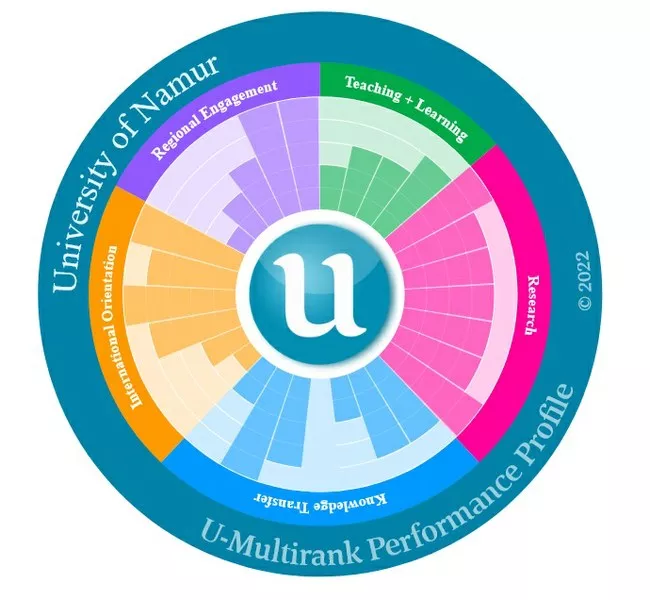A good report card at the end of the academic year for UNamur: the results of the U-Multirank ranking have just been revealed and they are particularly favourable for UNamur!
UNamur is at or above the average for more than 77% of the indicators (27 out of 35). And in more than half of the indicators (19 out of 35), UNamur scores "A" ("very good") or "B" (good).

Education
The UNamur confirms its excellence in teaching. The indicators relating to the Master's programmes, particularly the student success rate, confirm the quality label, with a score of "B" obtained. As far as the indicators on Baccalaureate degrees are concerned, the UNamur has made progress compared to the results of previous years but remains within or slightly below the average of the universities evaluated. This can be explained by the fact that in French-speaking Belgium we do not apply - in order to democratise access to university education - an entrance filter, unlike other countries or regions. There has also been a progression in the gender diversity of students at the UNamur.
Research
Once again this year, UNamur stands out for its excellent dynamism in the field of research, with very high scores for 7 of the 10 indicators under the heading "research".
UNamur thus obtains the highest score for its policy aimed at promoting interdisciplinary research, where professors, researchers, doctoral students and post-doctoral students from different disciplines combine their expertise and approaches to tackle specific and current themes. "The dynamism of Namur's research is also clearly evident in the results obtained for its ability to attract research funding and for the large number of post-doctoral students it employs," emphasises Annick Castiaux, Rector of UNamur. Finally, UNamur has a good score ("B") for its percentage of publications in the top 10% of most frequently cited publications worldwide.
Knowledge transfer
The results of the U-Multirank ranking clearly reveal the economic dynamism of UNamur. "We continue to make progress in terms of collaborations and partnerships with the industrial sector. This is reflected in the excellent results of our publications that are cited in patents, in the amount of private funding that our researchers obtain, and in the number of publications carried out jointly with industrial partners," Annick Castiaux is pleased to say. Overall, UNamur achieves very good results in its capacity to valorise knowledge, despite the fact that it does not organise a Master's degree in applied sciences, whose research is more easily valorised economically.
International dimension
With 3 out of 6 very positive indicators, UNamur clearly displays its international dimension. Thus, UNamur maintains its good performance in terms of the percentage of publications carried out in the framework of international collaborations, and the percentage of academic staff and doctoral students coming from abroad.
Regional anchoring
The regional anchoring aims at measuring the contribution of the university to its region, in particular through indicators relating to the placement of trainees and students in the Wallonia-Brussels Federation. The University of Namur appears to be a very good provider of graduates to its region: more than 75% of them work for employers in the Wallonia-Brussels Federation. "In terms of internships (Master's or bachelor's degree), two out of three students complete them in our region," says Annick Castiaux. Finally, let us emphasise the excellent performance (score "A") of the University of Namur in terms of its ability to attract regional funds to support its research.